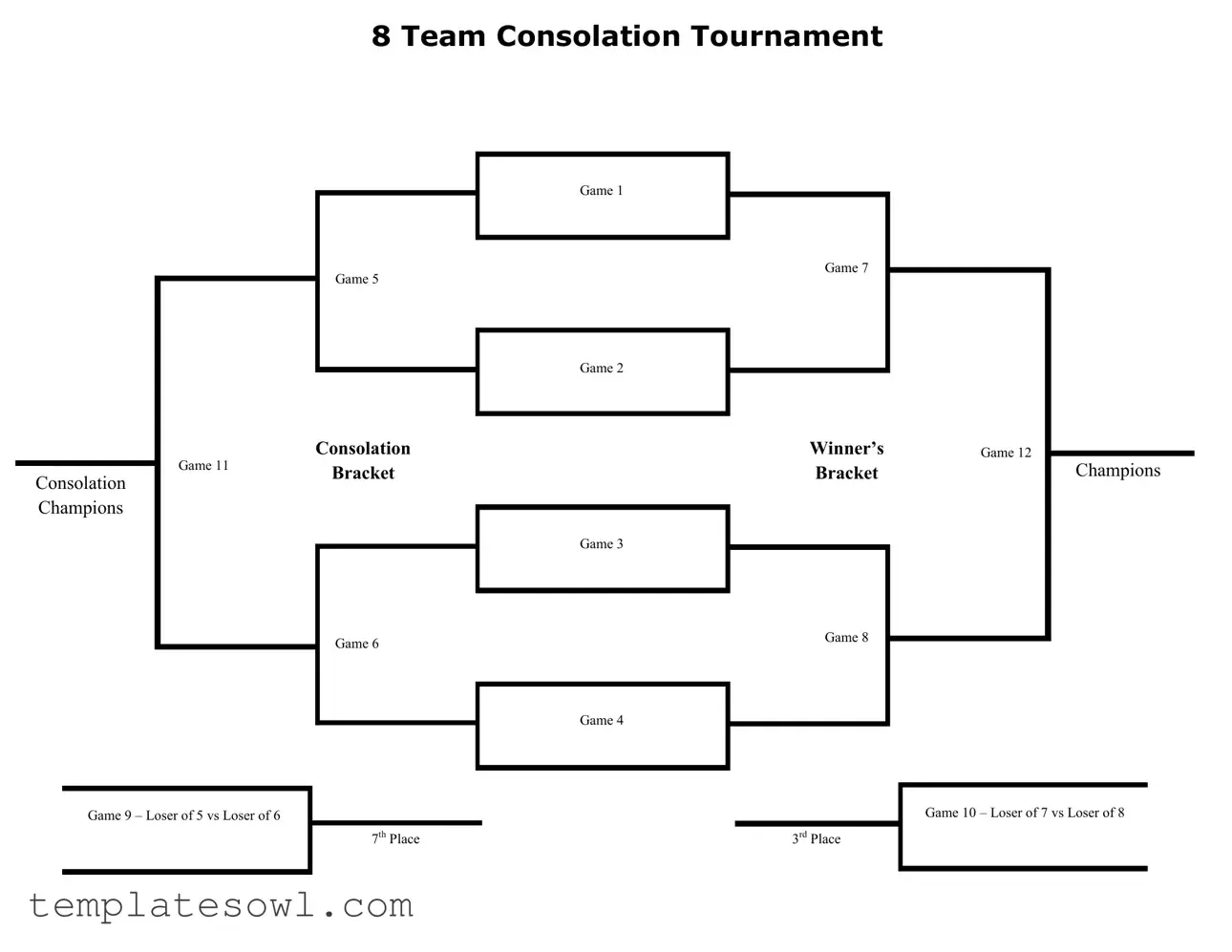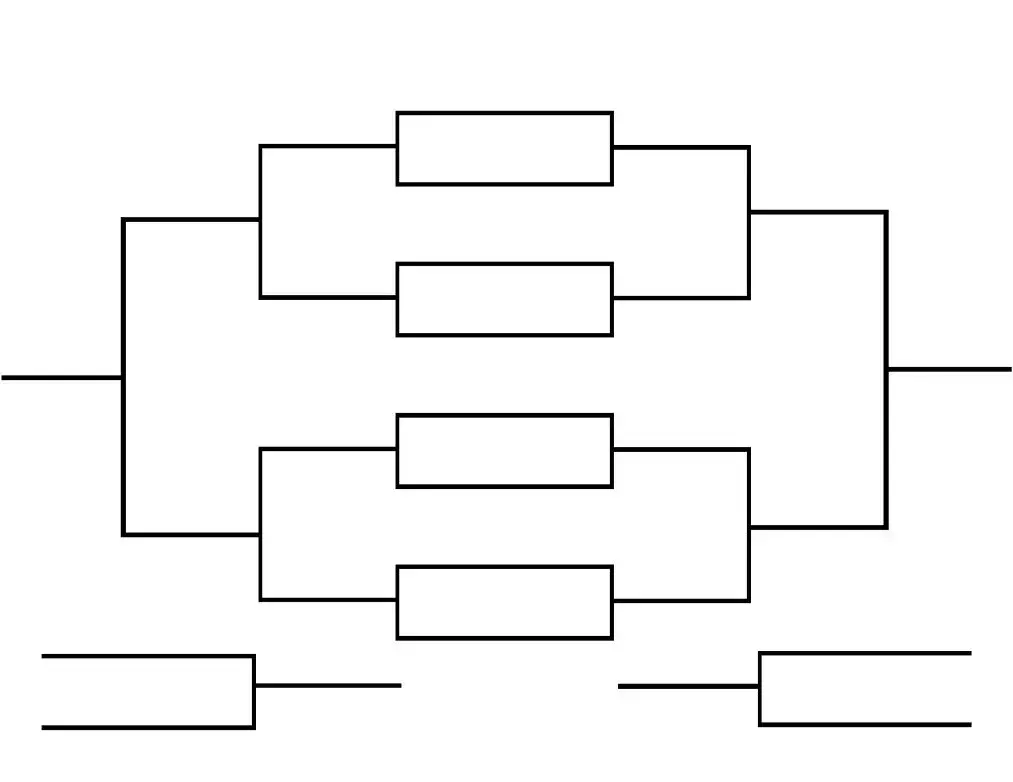What is the Tournament Consolation Bracket form used for?
The Tournament Consolation Bracket form is designed to outline the structure of a tournament's consolation matches. It specifies how teams that do not advance to the championship round can still compete for placement, ensuring that every team has the opportunity to play additional games and improve their standings.
How many teams can participate in the Consolation Bracket?
The Consolation Bracket is structured for 8 teams. Each team that is eliminated from the main tournament can enter this bracket, allowing for a total of 8 participants to compete for the consolation title.
What matches are included in the Consolation Bracket?
The Consolation Bracket includes several key matches. Teams will play through a series of games, ultimately leading to a Consolation Champion. The matchups include Games 1 through 12, with specific pairings for losers from previous rounds to determine placements such as 3rd and 7th places.
How is the winner of the Consolation Bracket determined?
The winner is determined through a series of games laid out in the bracket. Teams that lose in previous matches will face other losers in designated games. As teams advance through the bracket, they compete until a Consolation Champion is established.
Are there any awards for the winners of the Consolation Bracket?
Yes, there are typically awards for the Consolation Champion and possibly other placements. These might include trophies or certificates to recognize the efforts and achievements of the teams that compete in this bracket.
When are the games in the Consolation Bracket scheduled?
Game scheduling is usually determined by the tournament organizers. It is important to check the tournament schedule for specific times and dates, as they may vary based on other tournament timelines and logistics.
Can teams choose not to participate in the Consolation Bracket?
Yes, participation in the Consolation Bracket is typically optional. Teams that prefer not to compete further can opt out, but challenges in the form of placements may still be beneficial for development and experience.
What happens if there is a tie in the Consolation Bracket?
If a tie occurs, the tournament organizers have specific tie-breaking procedures in place. This may include additional play, point differentials, or head-to-head records, depending on the rules established for the tournament.
How do teams advance through the Consolation Bracket?
Teams advance by winning their matches within the bracket. Each game is critical, and the outcomes will dictate which teams move on to subsequent rounds or determine their placement within the final rankings.

